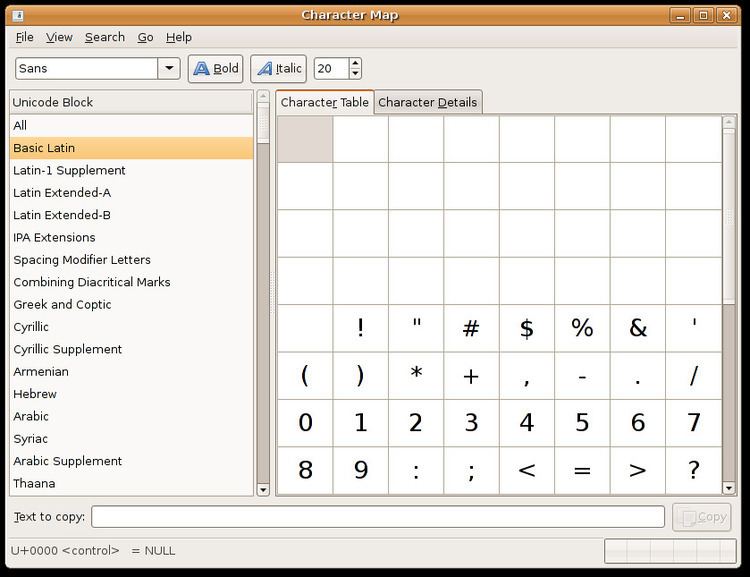 | ||
The National Library at Kolkata romanisation is the most widely used transliteration scheme in dictionaries and grammars of Indic languages. This transliteration scheme is also known as (American) Library of Congress and is nearly identical to one of the possible ISO 15919 variants. The scheme is an extension of the IAST scheme that is used for transliteration of Sanskrit.
Contents
Scheme table
The tables below mostly use Devanagari but they also include letters from Kannada, Tamil, Malayalam and Bengali to illustrate the transliteration of non-Devanagari characters.
Computer input by selection from a screen
Further Information: Unicode input#Selection from a screen
Many systems provide a way to select Unicode characters visually. ISO 14755 refers to this as a screen-selection entry method.
Microsoft Windows has provided a Unicode version of the Character Map program (find it by hitting ⊞ Win+R then type charmap then hit ↵ Enter) since version NT 4.0 – appearing in the consumer edition since XP. This is limited to characters in the Basic Multilingual Plane (BMP). Characters are searchable by Unicode character name, and the table can be limited to a particular code block. More advanced third-party tools of the same type are also available (a notable freeware example is BabelMap).
macOS provides a "character palette" with much the same functionality, along with searching by related characters, glyph tables in a font, etc. It can be enabled in the input menu in the menu bar under System Preferences → International → Input Menu (or System Preferences → Language and Text → Input Sources) or can be viewed under Edit → Emoji & Symbols in many programs.
Equivalent tools – such as gucharmap (GNOME) or kcharselect (KDE) – exist on most Linux desktop environments.
Font support
Only certain fonts support all Latin Unicode characters for the transliteration of Indic scripts according to the ISO 15919 standard. For example, Tahoma supports almost all the characters needed. Arial and Times New Roman font packages that come with Microsoft Office 2007 and later also support most Latin Extended Additional characters like ḑ, ḥ, ḷ, ḻ, ṁ, ṅ, ṇ, ṛ, ṣ and ṭ.
